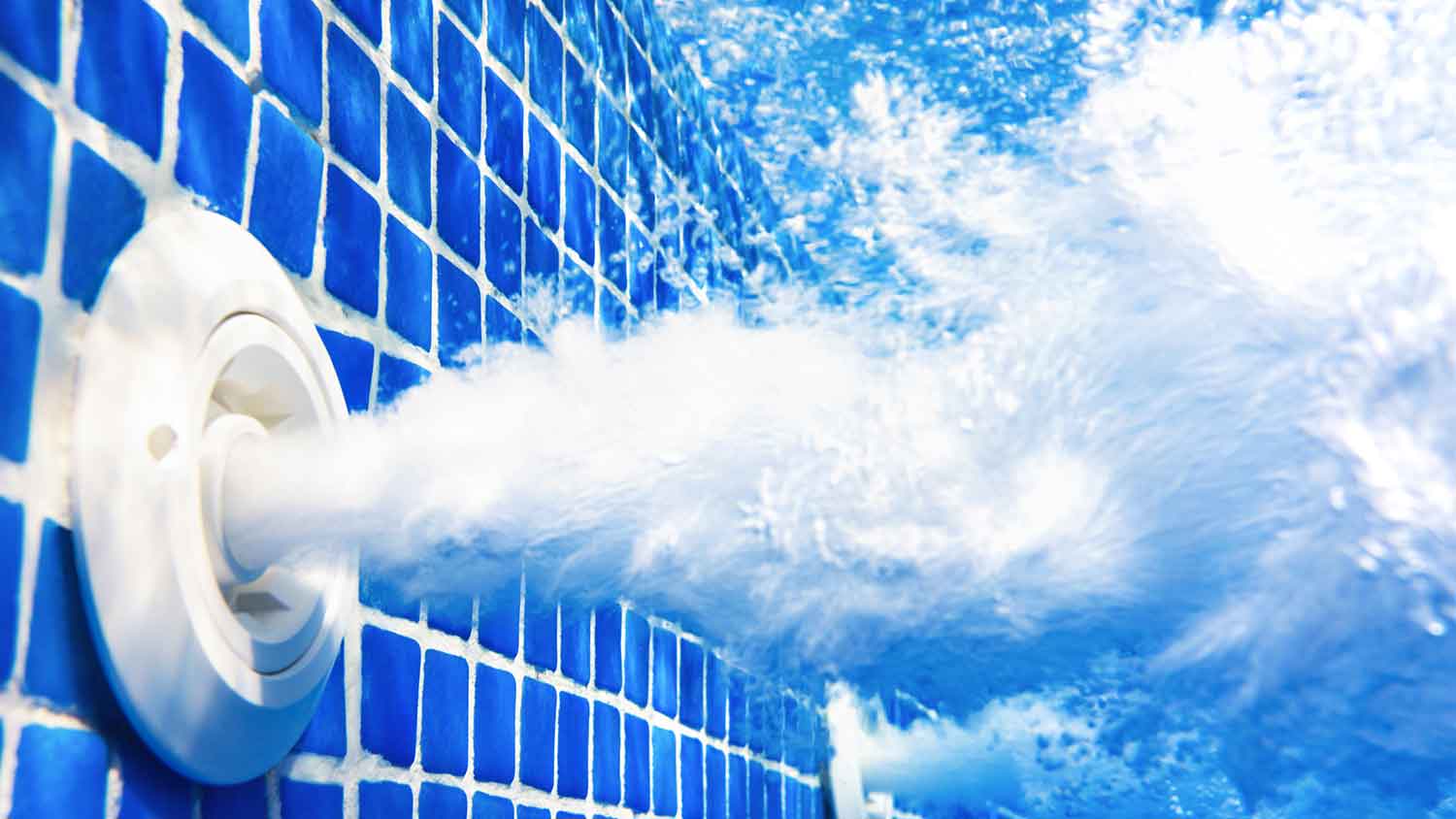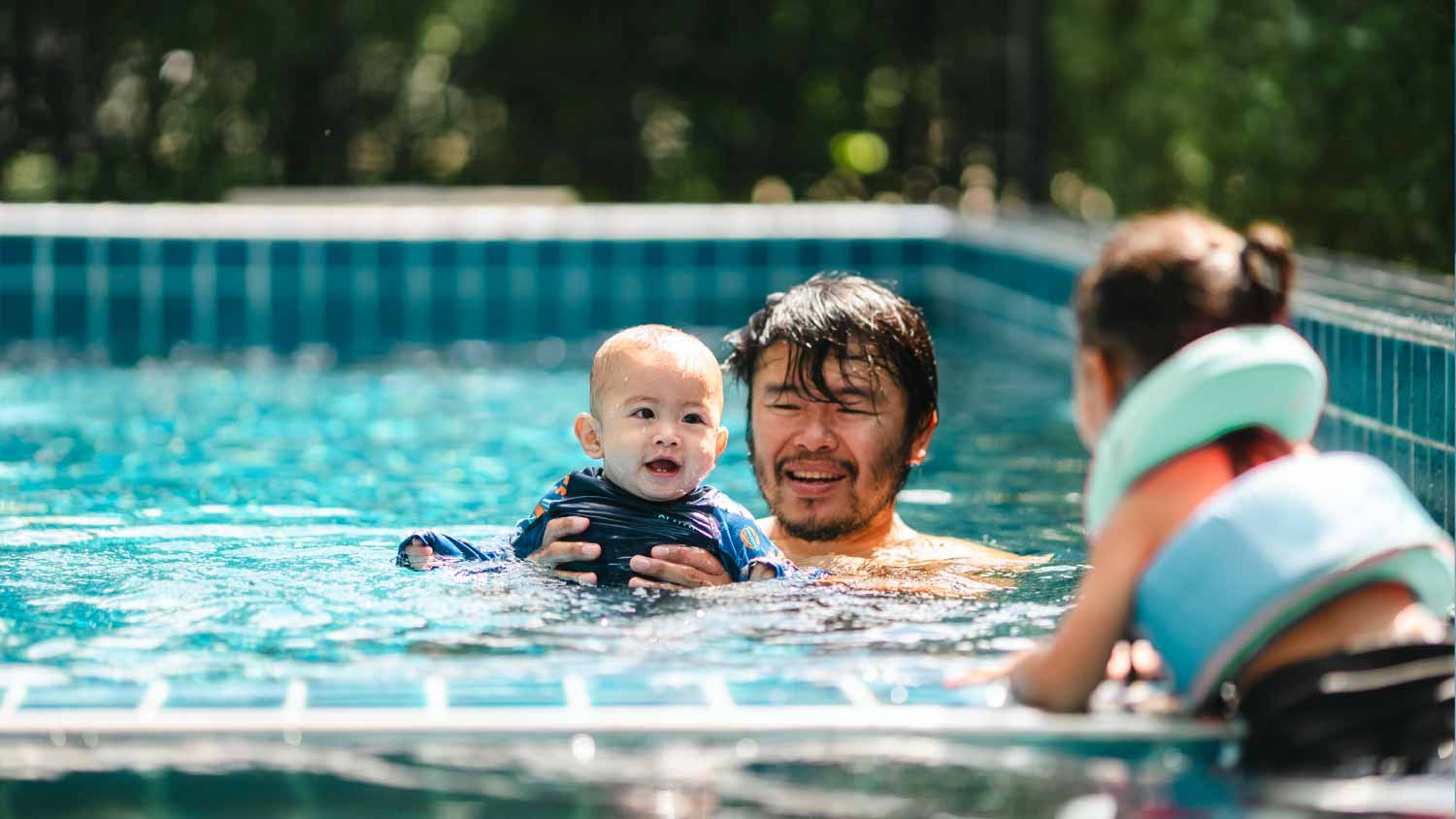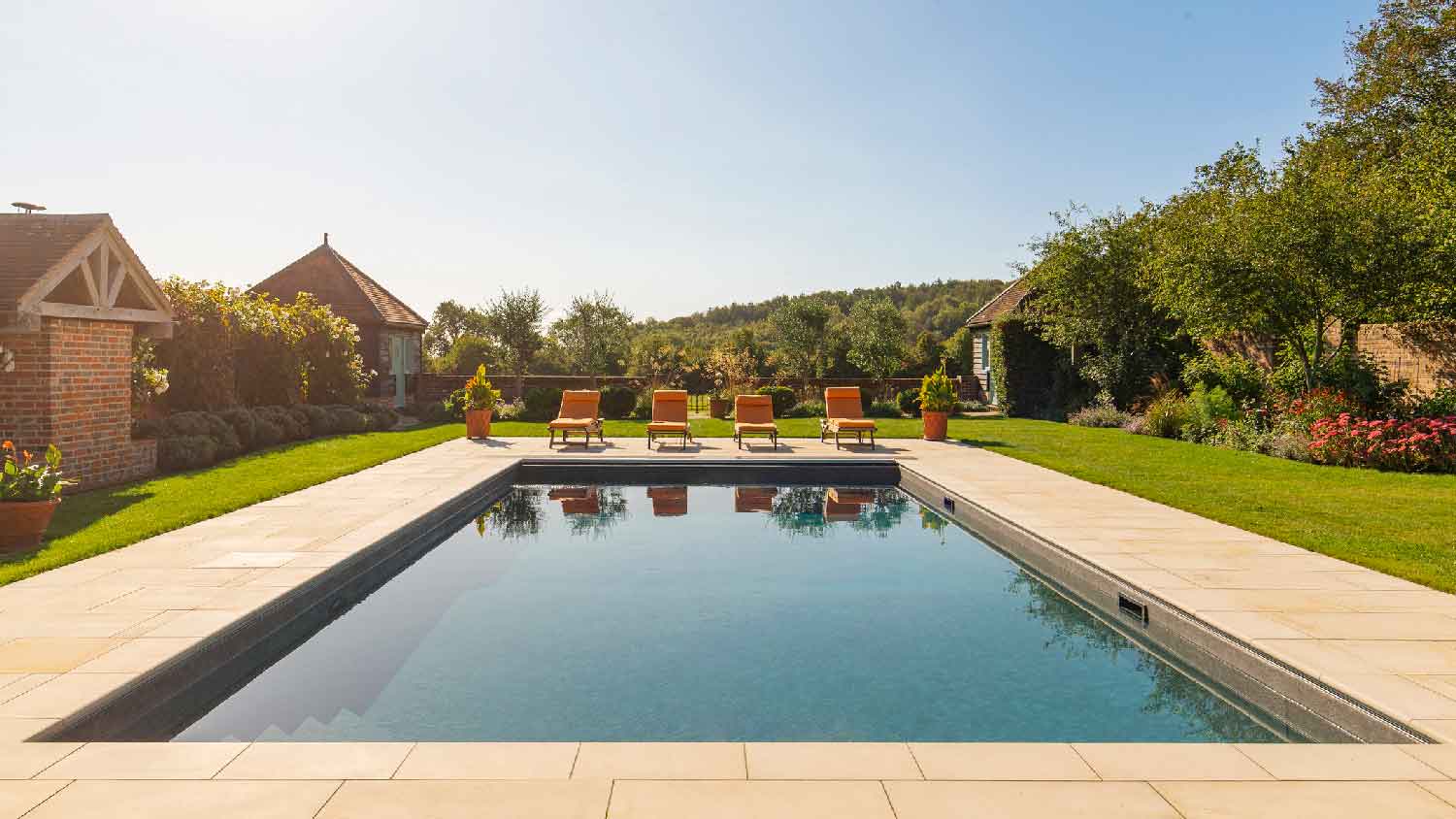Why Is My Above-Ground Pool Cloudy? 4 Common Reasons and Solutions
Clear up your cloudy pool for a safer swim
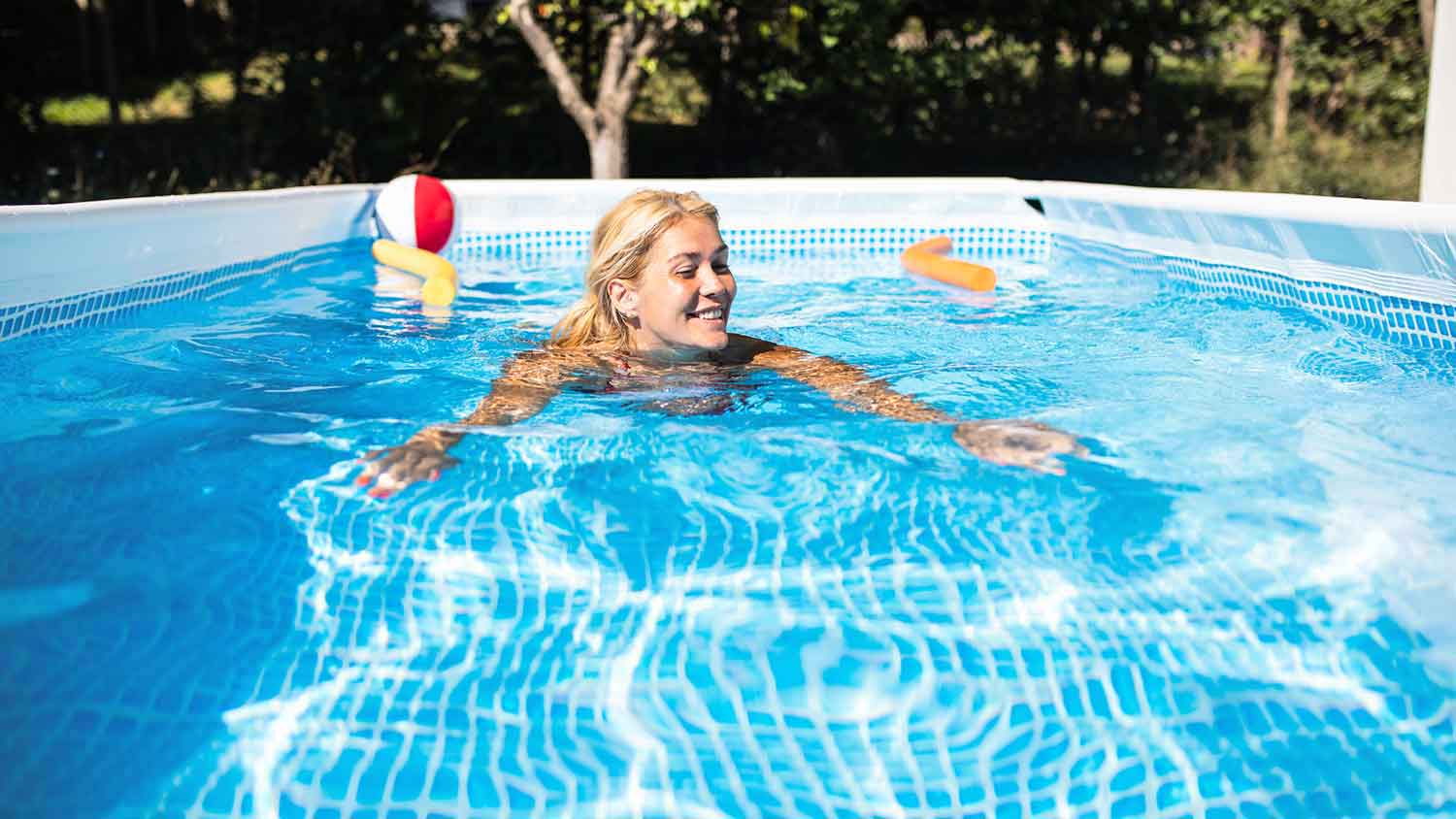

Cloudiness could be due to a dirty or worn-out pool filter.
Cloudy pool water can also result from low chlorine or a pH imbalance.
In other cases, algae can lead to cloudy pool water.
To pinpoint and fix the problem, test your pool water.
Call a pro if your pool is still cloudy after checking the filter and adjusting pH levels.
If you’re asking yourself, “Why is my above-ground pool cloudy?” we can help. From dirty filters to chemical imbalances, there are a handful of things that can make your pool water murky—and figuring out the specific reason is the first step in fixing the problem. Below, we’ve listed four of the most common culprits behind a cloudy pool, along with tips for clearing it up.
1. Dirty or Worn-Out Filter
When it’s working correctly, your pool’s filter catches dirt and debris so it doesn’t get into your pool water. But when the filter is dirty or clogged, it can release contaminants into the water, making it cloudy.
Similarly, as your pool filter ages and wears out, it often becomes less effective at filtering out particles. If that happens, you could end up with dirty or cloudy pool water.
How to Fix It
Your first step is to clean the pool filter. If you have a sand or diatomaceous earth (DE) filter, backwash it. To clean a cartridge pool filter, remove the cartridge, wash it with a garden hose, and soak it in filter cleaner solution. Afterward, run the filter for at least eight hours per day. If cleaning the filter doesn’t work, you may need to change the sand in your pool filter, add new DE powder, or replace the cartridge (depending on the type of filter).
2. Low Chlorine
“Free” chlorine is the amount of chlorine in your water that hasn’t yet been used. When your pool’s free chlorine levels are too low, the water can become cloudy.
How to Fix It
Use a pool water test kit to find your pool’s chlorine levels—both for free chlorine and total chlorine. Free chlorine levels should remain between 1 and 3 ppm (parts per million). When you subtract the free chlorine level from the total chlorine measurement, you’ll get the combined chlorine level, which should be less than 0.5 ppm.
If the levels are too low, you can balance them by shocking your pool (which should already be part of your weekly above-ground pool cleaning routine).
3. pH Imbalance
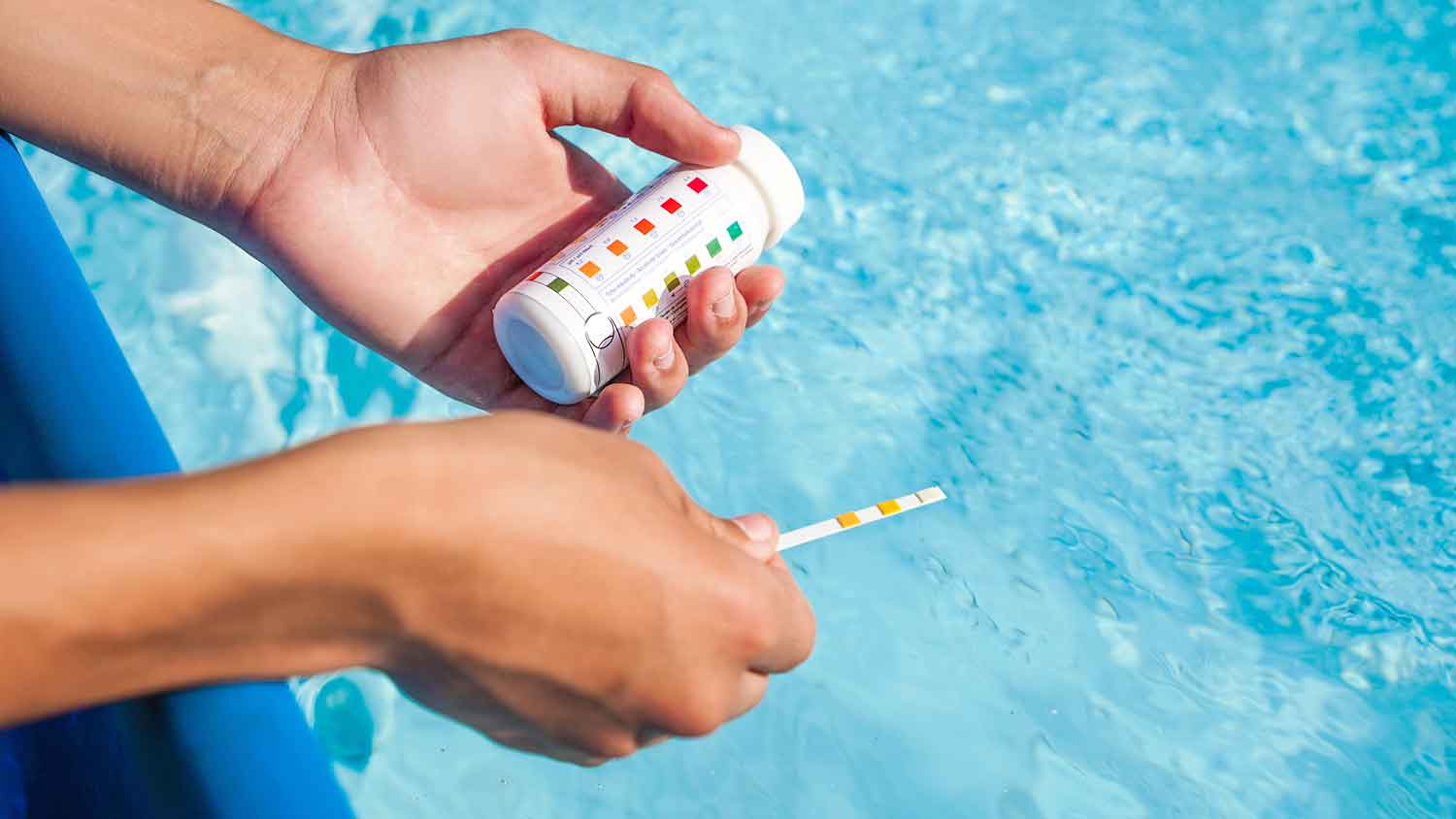
Whether it’s too high or too low, a pH imbalance in your pool can also cause cloudy water. When the pH is too high, it can lead to calcium buildup. If it’s too low, it could deplete your chlorine. Both situations can lead to a cloudy pool.
How to Fix It
Check your pool’s pH level with a test kit. Ideally, it should be between 7.2 and 7.8 (on a scale of 1 to 14). If it’s out of that range, you can take steps to increase your pool’s pH or lower the pH of your pool.
4. Algae
Algae can pop up in an above-ground pool for several different reasons, including poor filtration, chemical imbalances, and extreme weather. When it does, it can make your water appear cloudy.
How to Fix It
First, you need to identify the type of algae. Green algae is the most common, but black and mustard algae can show up in pools, too.
Follow these steps to remove green algae from a pool:
Scrub all pool surfaces, including the floor, walls, corners, and steps.
Vacuum the pool to remove all visible algae, running your filter on the “waste” setting so algae doesn’t go through your filter. If the water level gets six inches (or more) below the tile line, stop vacuuming and refill the pool.
Make a cleaning solution with one tablespoon of bleach and one tablespoon of water. Using a rag, wipe down your pool toys and accessories with the solution.
Wash the rag and all of your bathing suits with bleach.
Test your pool water with a test kit, paying particular attention to the pH and alkalinity. If necessary, adjust the levels.
Put on safety glasses and gloves, then double-shock your pool with two pounds of shock for every 10,000 gallons of water. Try to do this in the evening to prevent the sun from burning off the chlorine.
Run the filter and pump continuously until the water clears. This usually takes about 24 hours.
Test the water again. If necessary, balance any incorrect levels.
Clean your pool filter using the steps outlined earlier.
When to Call a Pro
To clear cloudy pool water, you’ll need to test—and possibly adjust—the chemical balance of your pool. You should already do this as part of your weekly pool maintenance, so you shouldn’t need a pro’s help. However, if you’ve checked and adjusted your pool water several times and it’s still cloudy, it may be time to call a local pool repair pro. They’ll have the expertise and tools to figure out exactly why your above-ground pool is cloudy—and how to fix it.
Frequently Asked Questions
Don’t worry if your pool is still cloudy right after shocking it. Some shocking products will leave your pool cloudy for a day or so after using them. However, if your pool is still cloudy several days after shocking it, it could be due to poor filtration, low chlorine, or one of the other problems outlined above. If you’ve tried our fixes but still can’t clear the cloudiness, call a pool repair professional.
You should add one 3-inch chlorine tablet for every 5,000 gallons of water in your pool. If you have a smaller pool, it’s better to use 1-inch chlorine tablets so you don’t accidentally add too much chlorine. Alternatively, you can add two to three ounces of powdered chlorine or half a gallon of liquid chlorine for every 5,000 gallons of water.



